
Heaters for heat pumps: a comparison
Calculations confirm: Replace radiators for greater efficiency and lower operating costs
It’s a double dilemma that really doesn’t need to be one: homeowners feel overwhelmed when faced with the decision about the best future-proof heating system. And tradespeople lack the political planning security to be able to provide their customers with the best advice. Fortunately, however, there is knowledge, forecasts and technologies that provide clear guidelines. By comparing systems and then running a calculation, we can help to reduce uncertainty and show how homeowners can switch to heat pump-based systems in existing buildings.
Objective: low water temperatures
The overriding question is: How do we manage to lower system temperatures (supply/return) to a low temperature range? When installing a heat pump, it is therefore critical to pay particular attention to having appropriate heat-emitting appliances in the home. Various factors are therefore crucial when selecting the right system, depending on the situation in each building: underfloor heating, conventional radiators or heat pump-based heaters. This question needs to be addressed early on, as the room heaters and their installation may also be eligible for government grants when converting to a heat pump system.

Fast response
Cooling function
Procurement costs
Installation work
Operating costs
Future-proof low temperature
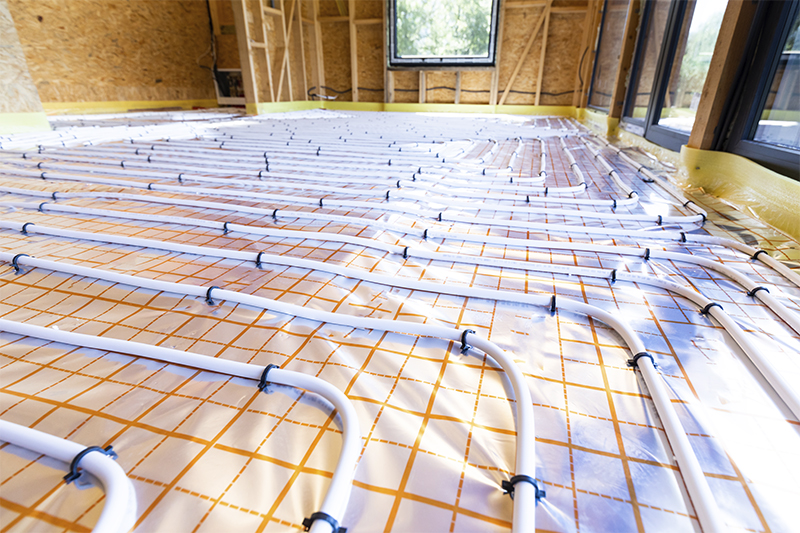
Underfloor heating
+
++
++
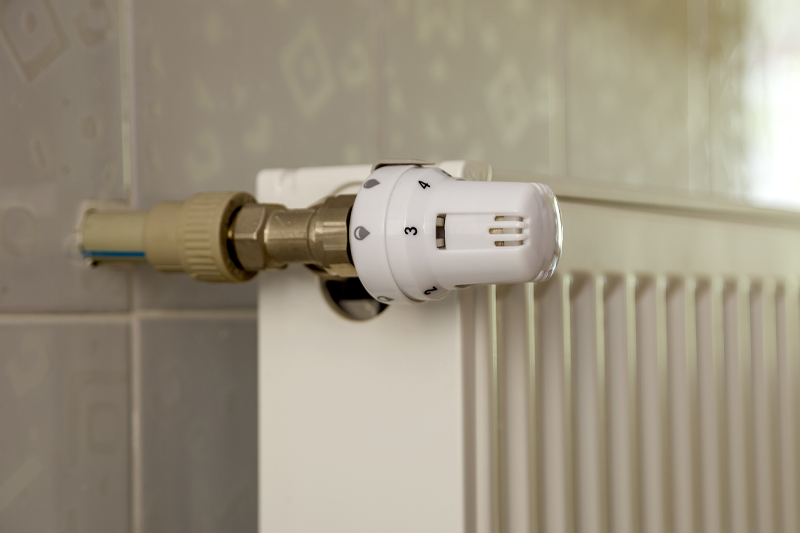
Conventional radiator
+
++
++
+
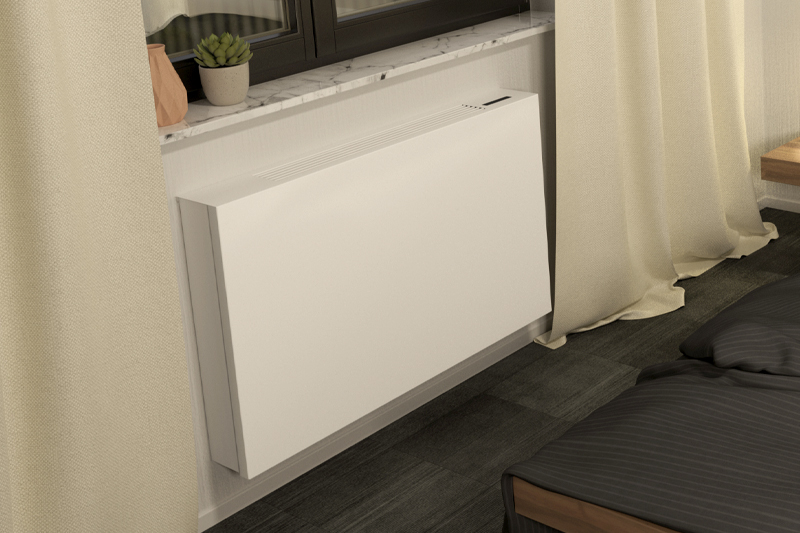
Heat pump-based heater
++
++
+
+
++
++
Admittedly, heat pumps can also supply system temperatures of 50 °C and more, and so supply conventional radiators, in the same way that gas-fired boilers did in the past. But that is inefficient. Conventional radiators can only operate with low water temperatures when the heating surfaces are considerably enlarged, which is not possible in many cases for structural or aesthetic reasons.
There will also most certainly be non-critical rooms, such as hallways, in which conventional radiators can perform sufficiently well even in the new system. However, in general, the heat output of these radiators operating with low water temperatures will be too low in most occupied areas. With system temperatures of 45/40 °C and the use of conventional type 22 radiators (1429 W, 75/55 °C), the current heating surface of 1000 mm (width) and 600 mm (height) would have to be increased to a width of 2800 mm to achieve a heat output of 1541 W.
Comparison of the size of conventional radiators at differing system temperatures
Rough calculation for an existing detached house
Let us consider the potential savings of different heaters combined with a heat pump in a detached family home. An efficient overall system with an appropriate seasonal performance factor (SPF) is important here. THE SPF is a measure for the efficiency of a heat pump and indicates the thermal energy that is supplied per unit of electrical energy. A higher PSF means more efficient utilization and lower operating costs.
Our calculation is based on a heating demand from a gas-fired heating system of 25000 kWh/a and operating costs of 3000 €/a. (House year of construction 1985, gas price after the price cap of 0.12 €/kWh, electricity price after the price cap of 0.40 €/kWh).
| Heat pump with ... | SPF | Energy requirement | Operating costs |
|---|---|---|---|
| Conventional radiator with 65 °C supply temperature |
3,2 | 7575 kWh/a | 3030 €/a |
| Enlarged radiator with 50 °C supply temperature |
4,0 | 6250 kWh/a | 2500 €/a |
| Heat pump-based heater with 35 °C supply temperature |
4,7 | 5260 kWh/a | 2105 €/a |
Floor plan with gas-fired boiler
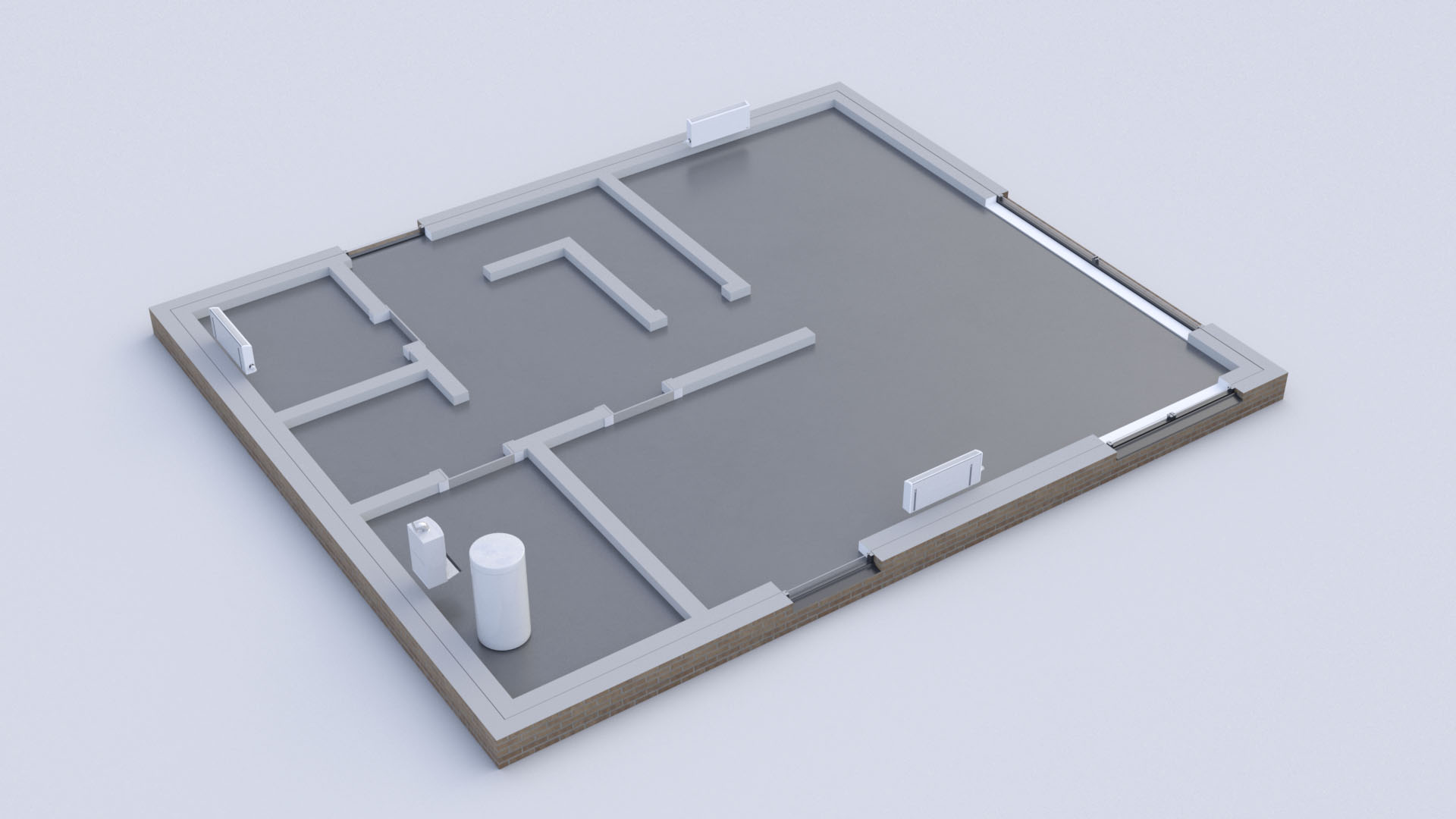
Previously with a gas-fired boiler and conventional radiators with system temperatures of 75/55 °C.
Floor plan with heat pump
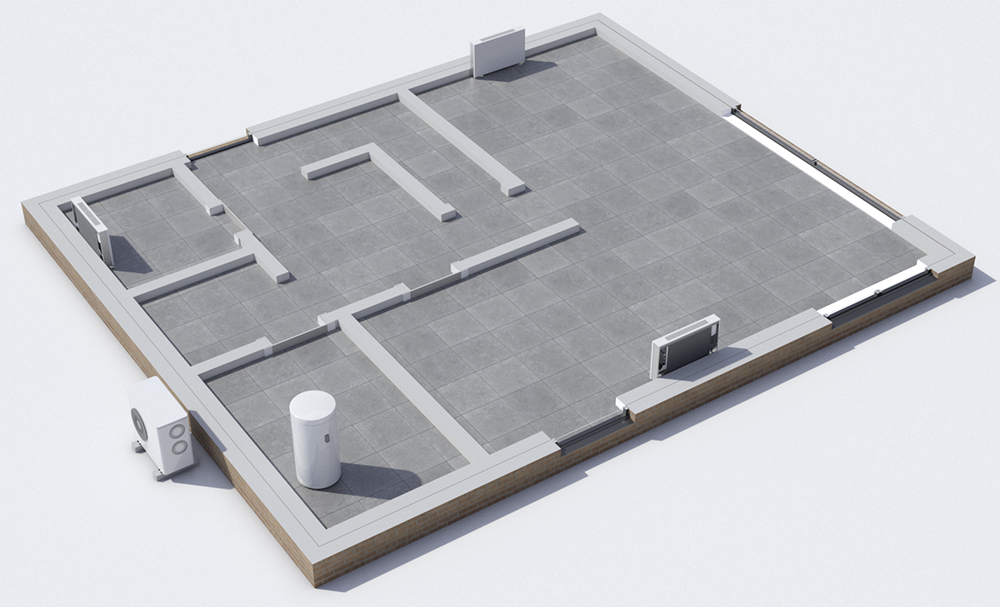
Afterwards with air/water heat pump and PowerKon LT heat pump-based heaters with system temperatures of 45/40 °C.
When switching to a heat pump, the existing radiators can be replaced by PowerKon LT heat pump-based heaters measuring 1000 mm wide and providing an output of 1740 W at a system temperature of 45/40 °C. Anything else would be inefficient, resulting in a low seasonal performance factor (SPF) and therefore higher operating costs. Underfloor heating would be the most expensive investment and the dimensions of conventional radiators would be too large. Moreover, they are not much cheaper to buy than PowerKon LT heaters. By contrast, PowerKon LT are eligible for government grants.
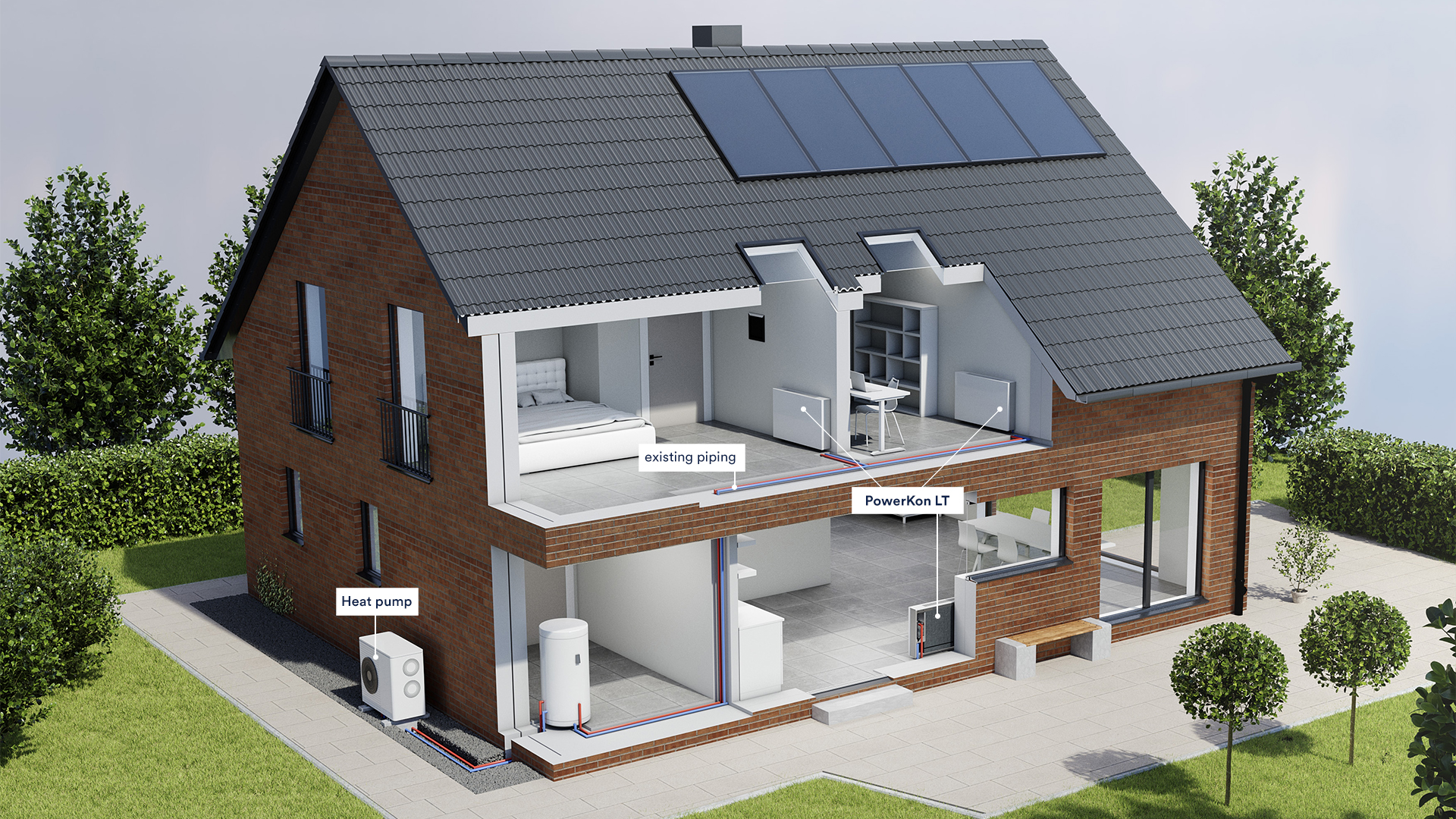
Conclusion
Older radiators are simply replaced by PowerKon LT and this does not generally involve any elaborate chasing or pipe routing. The 141 mm minimal depth of PowerKon LT blends well into rooms and the air intake opening is concealed underneath.
Heat-pump based heaters also offer the option of cooling. Combined with PowerKon LT heaters, the heat pump system works 35 or 25 % more efficiently at low system temperatures of 35-45 °C compared to higher temperatures of 55 °C.
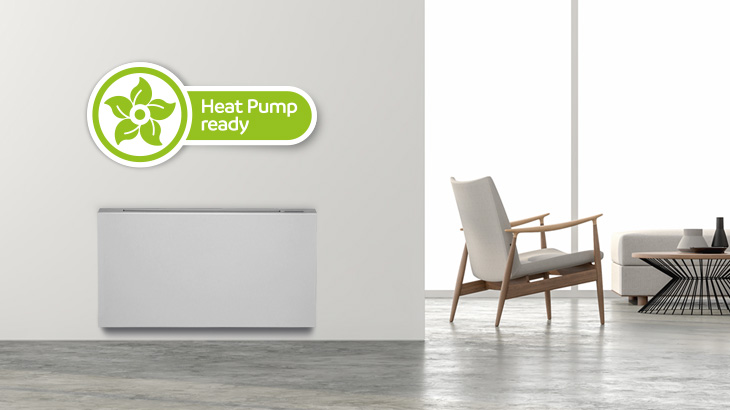
PowerKon LT heat pump-based heaters
Heating and cooling with heat pumps in existing and new buildings - The PowerKon LT is ideally suited for switching from oil or gas heating to a heat pump in new buildings and existing houses. Depending on the pipe network and individual comfort requirements, you can even benefit from a cooling function.

The carbon footprint of our products
As a key industry for the energy transition and thus with massive responsibility towards future generations, building services possess a major lever for the sustainable development of the building sector. Taking this into account, building services design experts wish to use products that conserve resources and save CO2.
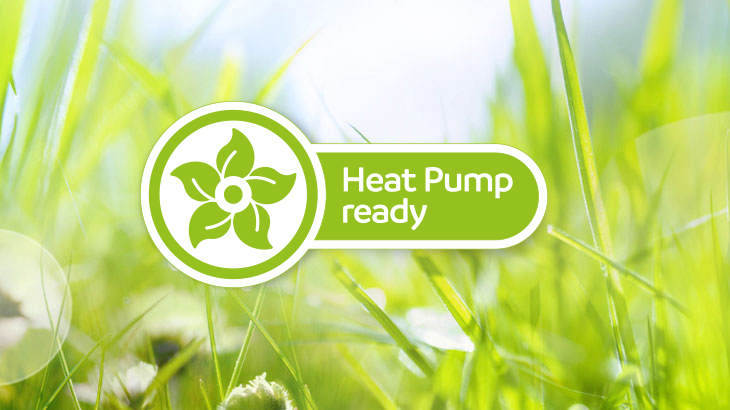
Heating and air conditioning units for heat pumps
We have appropriate heat pump solutions for many applications, from industrial sheds, office buildings, hotels to private homes.

